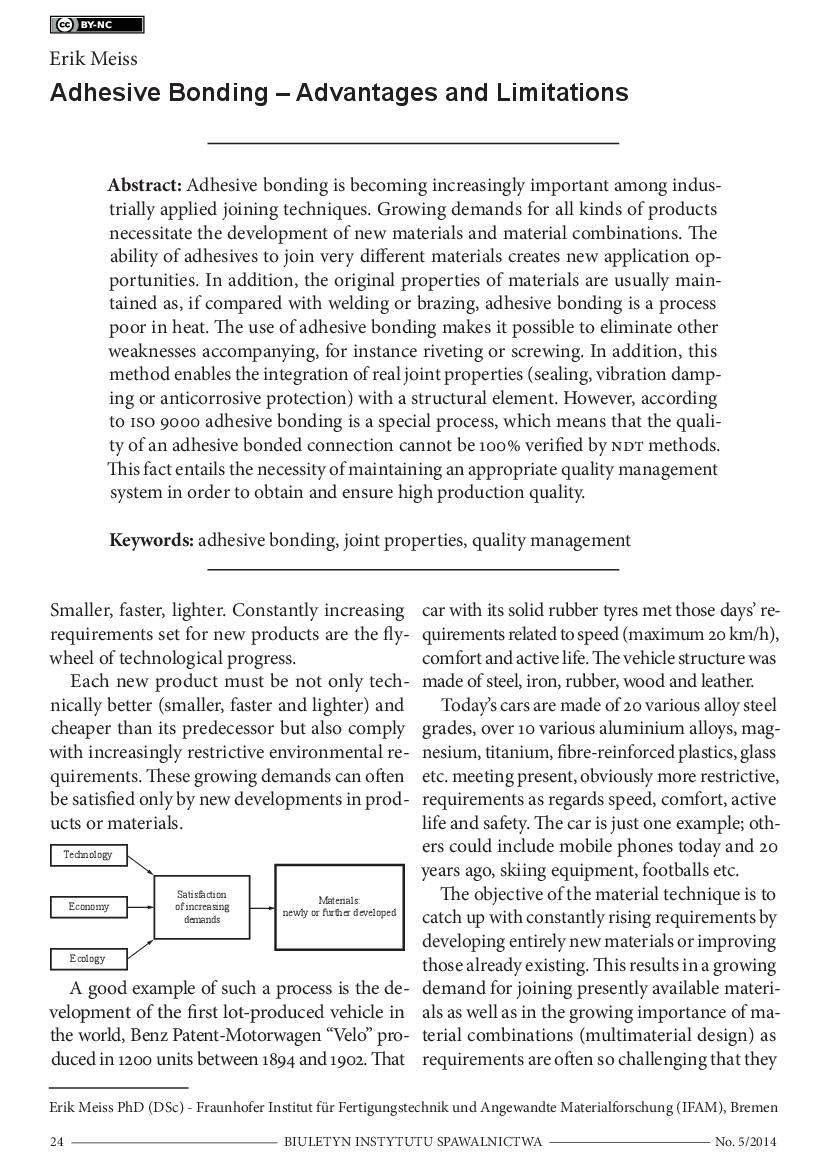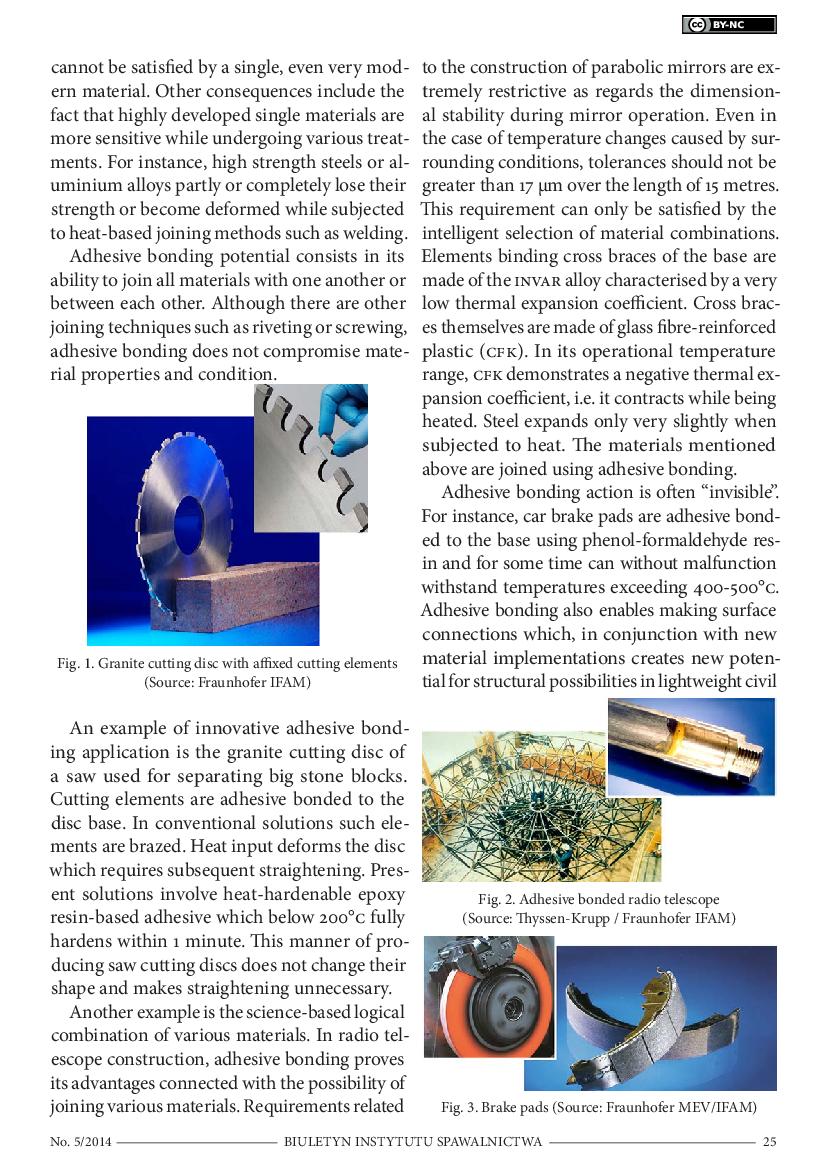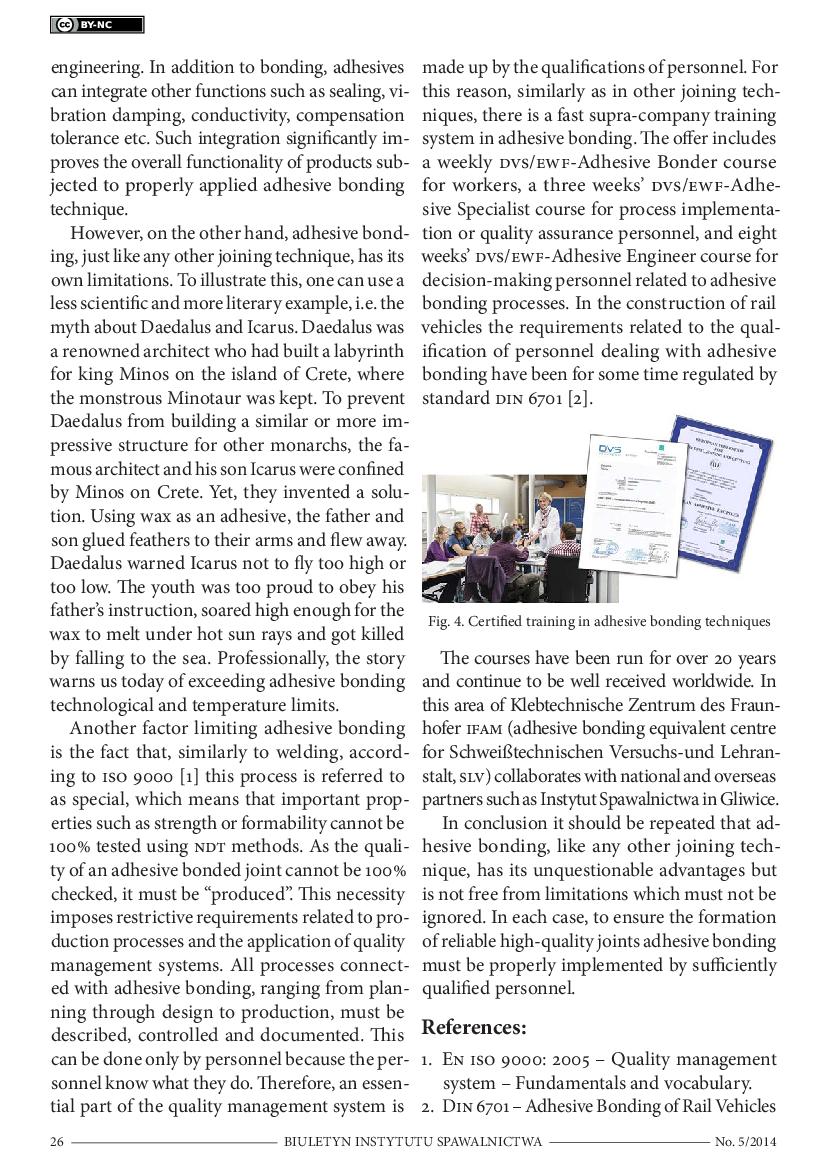Adhesive Bonding – Advantages and Limitations
Adhesive bonding is becoming increasingly important among industrially applied joining techniques. Growing demands for all kinds of products necessitate the development of new materials and material combinations. The ability of adhesives to join very different materials creates new application opportunities. In addition, the original properties of materials are usually maintained as, if compared with welding or brazing, adhesive bonding is a process poor in heat. The use of adhesive bonding makes it possible to eliminate other weaknesses accompanying, for instance riveting or screwing. In addition, this method enables the integration of real joint properties (sealing, vibration damping or anticorrosive protection) with a structural element. However, according to ISO 9000 adhesive bonding is a special process, which means that the quality of an adhesive bonded connection cannot be 100% verified by NDT methods. This fact entails the necessity of maintaining an appropriate quality management system in order to obtain and ensure high production quality.
 1 / 3
1 / 3
 2 & 3 / 3
2 & 3 / 3




